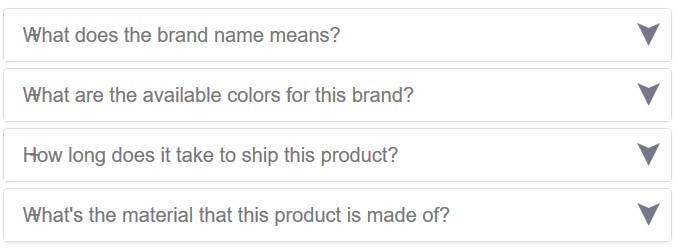Setting up an online store nowadays is much easier than before. Back in the day, you had to go to a development company to create and launch a customized eCommerce store that would fulfill your business needs. This sometimes required programming a website from scratch. But now, if you decide to launch an eCommerce website, you can have your website up and running in a short time. That’s because there are different types of Content Management Systems (CMS) that provide templates and plugins to help you set your online store, help you with eCommerce SEO, launch your store and start selling.
There are some elements you need to take into consideration before launching your eCommerce website. These include your niche, value proposition and the store’s design. One of the most important elements to be considered is Search Engine Optimization (SEO) And doing that before launching your website is crucial.
However, there are some SEO factors that a lot of eCommerce websites are struggling with. These factors affect user's behaviour, which will eventually affect the conversion rates and revenue. In this article we will tackle these eCommerce SEO challenges and take a look at how they can affect your website. We’ll also share some tips on how you can overcome those challenges.
Related: 4 sure-fire ways to maximize your eCommerce sales
Challenges of eCommerce SEO
1. URL Structure
It’s essential to create the right URL (link) structure for your website for both the users and search engine crawlers. A simple way to set the right structure is by identifying your website hierarchy and from there you can identify how your URL structure should be.
Note: It’s always better to use keywords based on keyword research in naming your URLs.
Let’s say you own an eCommerce website that sells bags. Here’s an example of how your URL structure would look like:
- Bags.com ⇒ your home page
- Bags.com/main-category/ ⇒ Main category (Could be “school bags”)
- Bags.com/school-bags/sub-category/ ⇒ Sub category for “school bags” could be “pink bags”
Or - Bags.com/product-name/ ⇒ Where product page should be located.
Have you noticed that in the URL structure, the product name is right after the domain name?
A question that we usually get is why we can’t add products after sub-category. Isn’t that more organized?
It is indeed more organized, but in eCommerce SEO we take into consideration a factor that we call “Page Depth” . This factor refers to how many clicks it takes for a customer to reach a page. The more clicks needed to reach a page, the less link juice will be passed to it, and the harder it will be for both the user and crawler to reach the page.
2. Content on category
Category and subcategory pages group individual web pages together based on a similar subject or theme. They are a crucial part of the overall user experience and can have a big impact on eCommerce SEO.
Most eCommerce websites include a couple of pictures of the product and a couple of lines explaining what the product is. If that is the case for your eCommerce website, then you might lose an opportunity to rank better.
You’ll need to have a generous amount of text on these pages to thoroughly explain and provide details for each product. But why?
- This text can be useful to give more information about your products.
- Search engines love pages with high quality content.
- This text can be used to increase the chance for internal linking.
Here are three ways to optimize the category page:
1. Bulk: This is the default method that most websites use. You can add two or three paragraphs at the end of your page (after listing all products).
Our advice to you is NOT to place this text at the top of the page. It is far more important for when a user lands on the category page as what he needs to see is the product.

2. Expanding Text: This is a creative way to categorize all the information you want to add on the page. This can be added in the form of Frequently Asked Questions (FAQs) about the products, and within each question you can add all the necessary information using relevant keywords to your products.


3. Creating tabs: This is another great method for eCommerce SEO if you don’t want users to keep scrolling down the page. The tab can be on the right or left, but the only disadvantage for this is that it must be clicked by users to view the content. On the other hand, the content in all tabs will still be visible for crawlers when they crawl the page.
What’s the difference between the three optimization options for the category page?
- Bulk ⇒ increase page length in scrolling
- Expanding text ⇒ Categorize information and will not make the page’s length long.
- Tabs ⇒ Will not affect page length at all.
3. Duplicated Content
By default, any eCommerce website will suffer from this issue. The way that online stores are programmed can generate extra parameters to URLs causing duplicate content. Let’s see how this might happen:
A user is looking for products that cost between $10 and $20 and after selecting the price, URLs might turn into something like this:
- com/category/sub-category?price=10&max=20
While the original URL should look like this:
- com/category/sub-category
Search engines can crawl and index both URLs, but they will consider them two different pages that have the same content. That’s when you should act accordingly by doing one of two things:
- txt: A small line to add to this file will tell search engines to ignore those URLs that contain specified parameters.
Just add in robots.txt file: Disallow: *?price=
In this file, you can add any parameter that you want to exclude.
- Canonical Tags: One line of code that will be added on this page will tell crawlers that this page has only one unique URL, and to ignore any other URLs for this page.
Example: <link rel="canonical" href="http://www.example.com/category/sub-category/">
Having this URL in the code means that search engines will index only this URL and will ignore all other URLs with specified parameters.
4. Internal Link Structure
Internal linking - which is a crucial part of eCommerce SEO - makes search engines understand how important a specific page is because you’re pointing many links within the website to this specific page. Mostly it’s the home page because your logo by default points to it across your website.
But what about other pages? What if you want to rank a category page higher in search engine result pages? In order to do that, you can select a specific keyword related to the product in the page and use that keyword in the category page’s text. If you have a blog, you can also write an article about that product, include the keyword in the article and link to the product’s page.
Bonus tip: Use “Bread Crumbs” to increase internal links for your category and sub category pages, how? Since bread crumb links are visible across all pages on your website, whether it's a category, sub-category or product page. Each page will have links that go back to its parent category (like the picture below).
So, if a sub-category page includes 100 products, each product will include a link to its parent category and main category.

Bread Crumbs can help you with:
- They enhance the user’s experience by allowing users to find their way through the website easily.
- Crawlers can also access different pages easily as well.
- Increase your internal linking.
For those who already do SEO work, we’ve covered four tips for eCommerce SEO to help you optimize. If you’re looking for more inspiration and SEO tips, tricks and trends make sure you check our blog.





